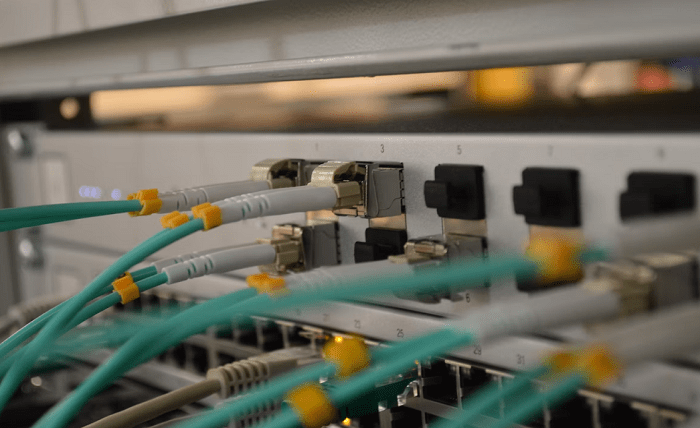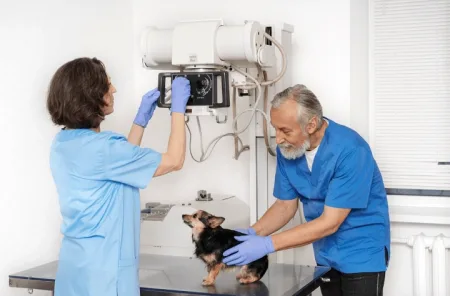Network cabling has become essential to any office space in today’s contemporary business world. Your workplace network may run smoothly and efficiently with the help of properly designed and installed network cabling, enabling your staff to be productive and maintain contact with clients and customers. This article explores basic design and layout considerations for structured cabling in office spaces.
Zip ties are versatile fastening tools, perfect for securing cables, organizing items, and even makeshift repairs in tight spaces.
Office Cabling Density
Cabling density is among the most crucial factors when planning network cabling for office spaces. The maximum number of cables that can be put in a specific area depends on the cable’s thickness. The cables should be at most twice the number of ports because the optimum density for structured cabling is 1-2 times.
Understanding cabling density is essential because overcrowded cabling can lead to several problems, including poor network performance, signal interference, and safety hazards. Considering cabling density when designing and installing structured cabling is crucial to ensure your office network runs smoothly and efficiently.
When calculating cabling density, several factors need to be taken into consideration, including;
- The size of the space.
- The total number of users.
- various types of devices join the network.
Ensuring there is enough room for future growth and expansion is also crucial.
Consequences that Overcrowded cabling can lead to;
- Increased heat and risk of fire.
- Difficulty in troubleshooting and maintenance.
- Reduced network performance.
By considering cabling density and ensuring that your office cabling is adequately designed and installed, you can avoid these problems and ensure your network runs smoothly and efficiently.
Data Cabling Types
Two primary forms of structured cabling are frequently utilized in office settings:
- copper cabling
- fibre optic cable
Copper cables are the most widely utilized kind in offices since they are affordable and simple to install. Additionally, it works with various devices and many other software programs. Copper wiring can readily be interfered with by other electronic signals and has a limited capacity for high-speed data transmission.
Nevertheless, copper cables are slower and less dependable than fibre optic cables; however, they cost more and need specialized installation tools. Fibre optic cabling transmits data using light rather than electricity. Therefore, it is unaffected by electrical interference and can transfer data quickly and in larger quantities.
It’s critical to consider your unique requirements and budget when selecting the appropriate cables for your workplace. Using fibre optic connections is a good idea if you want to send data quickly and have extra money. If you have a little money and want something cheaper, copper cables might be a good choice. Ultimately, you should pick what you need and like the most.
Design and Layout Considerations
Structured cabling for offices must consider the following factors:
- The layout of the area
- The anticipated user count
- The kinds of network-connected devices
All users and devices should be supported by adequate bandwidth, which should also be flexible enough to allow for future expansion.
Another important consideration is the location of the data centre or server room. The data centre should be in a secure area with proper ventilation and cooling to prevent overheating. It should also be easily accessible for maintenance and repairs.
Proper Installation
Proper network cabling installation ensures that your office network runs smoothly. Hiring a professional network cabling installer with experience designing and installing network cabling for office spaces is recommended. A professional installer can ensure that the cabling is installed correctly and meets industry standards. They can also guide you on the best type of cabling based on your specific needs and budget.
Maintenance and Upgrades
Regular maintenance and upgrades for network cabling are crucial to ensure the reliability and performance of your office network. Maintenance helps to identify and address any issues before they escalate, while upgrades keep your cabling infrastructure up-to-date with evolving technology and business needs.
Typical maintenance tasks for network cabling include regular inspections, cleaning, and testing. Reviews help identify any physical damage or wear and tear that may affect performance. Cleaning removes dust and debris that can hinder signal quality. Testing ensures the cabling meets industry standards and can handle the required data transfer rates.
The environment, usage, and network-connected equipment are only a few examples of the variables that affect how frequently maintenance chores are performed. Generally, testing may be done less regularly than inspections and cleaning, which should be done at least once a year.
Network failures that frequently happen, sluggish data transfer rates, and compatibility problems with new devices are all indications that your network cabling needs to be upgraded. It may be necessary to upgrade to higher bandwidth cabling or incorporate new technologies if your current cable infrastructure cannot meet your office’s demands or needs updating.
By prioritizing regular maintenance and being aware of signs that indicate the need for upgrades, you can ensure your network cabling infrastructure’s longevity and optimal performance.
In conclusion, proper network cabling design and installation ensure your office network runs smoothly and efficiently. When designing and installing network cabling in an office space, it is important to take into account variables, including cabling density, cabling kinds, design and layout concerns, appropriate installation, and maintenance and upgrades. By working with a seasoned network cabling installation and fiberglass cable tray company, you can ensure that your workplace network is current, secure, and ready to serve your business demands.
Consider calling a data cabling services if you need expert network cabling services for your workplace space. They are a top supplier of structured cabling solutions for establishments of all sizes, placing a premium on dependability, quality, and client delight.



